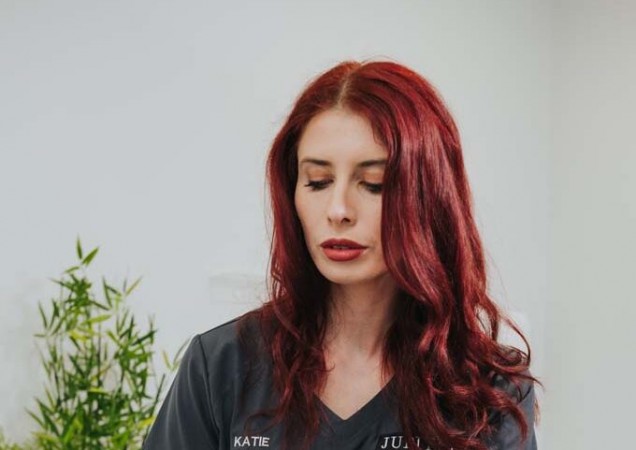
Having healthy, lustrous hair is a goal that many of us aspire to achieve. However, frequent exposure to harsh environmental factors and the use of heat styling tools can leave our hair looking dull, dry, and damaged. Deep conditioning and nourishing your hair at home is a simple yet effective way to revitalize and rejuvenate your locks without breaking the bank. In this article, we will guide you through the step-by-step process of deep conditioning and nourishing your hair at home, ensuring you achieve salon-like results in the comfort of your own bathroom.
What is Deep Conditioning?
Deep conditioning is a hair treatment that involves applying a rich, moisturizing product to your hair to nourish it from root to tip. Unlike regular conditioners, which only provide surface-level hydration, deep conditioners penetrate the hair shaft, delivering much-needed nutrients to strengthen and restore your locks. Deep conditioning is especially beneficial for dry, damaged, and chemically treated hair.
Benefits of Deep Conditioning
Deep conditioning offers a wide range of benefits for your hair, making it an essential part of any hair care routine. Some of the key advantages include:
Identifying Your Hair Type
Before you start the deep conditioning process, it's crucial to identify your hair type. This will help you choose the right products and tailor your hair care routine accordingly. There are generally four main hair types:
DIY Deep Conditioning Hair Masks
Creating your own DIY deep conditioning hair masks is an excellent way to nourish your hair with natural ingredients. Let's explore some simple yet effective recipes:
Avocado and Banana Hair Mask
Instructions: Mash the avocado and banana until smooth, then add coconut oil and mix thoroughly. Apply the mixture to your hair, focusing on the ends. Leave it on for 30 minutes before rinsing with cold water.
Coconut Oil and Honey Hair Mask
Instructions: Mix the coconut oil and honey until well combined. Apply the mixture to your hair, gently massaging it into your scalp. Leave it on for 45 minutes before rinsing with a mild shampoo.
Aloe Vera and Olive Oil Hair Mask
Instructions: Blend the aloe vera gel and olive oil until smooth. Apply the mixture to your hair and cover it with a shower cap. After 40 minutes, rinse it off thoroughly.
Yogurt and Egg Hair Mask
Instructions: Beat the egg and mix it with the yogurt until creamy. Apply the mixture to your hair, let it sit for 20 minutes, and then rinse with lukewarm water.
How to Deep Condition Your Hair Properly
Deep conditioning requires a specific technique to ensure the product reaches all parts of your hair effectively. Follow these steps for optimal results:
Hot Oil Treatment for Nourishing Your Hair
Hot oil treatments are another fantastic way to nourish your hair and provide it with much-needed moisture. You can use various oils such as coconut oil, olive oil, argan oil, or jojoba oil for this treatment.
Instructions:
Scalp Massage for Better Hair Health
Massaging your scalp regularly can improve blood circulation, stimulate hair growth, and relieve stress. You can use your fingertips or a scalp massager to gently massage your scalp in circular motions for 5-10 minutes before washing your hair.
The Role of Diet in Nourishing Your Hair
A well-balanced diet rich in vitamins, minerals, and proteins plays a crucial role in maintaining healthy hair. Incorporate foods like spinach, eggs, nuts, fish, and avocados into your diet to promote hair health from within.
The Importance of Regular Trims
Regular trims help eliminate split ends and prevent them from traveling up the hair shaft, leading to healthier and stronger hair overall. Schedule a trim every 6-8 weeks to maintain your hair's vitality.
Tips for Maintaining Healthy Hair
Common Mistakes to Avoid
How Often Should You Deep Condition?
The frequency of deep conditioning depends on your hair type and its condition. As a general guideline, deep condition your hair once a week for dry and damaged hair, and once every two weeks for normal to oily hair.
Incorporating Hair Serums
Hair serums can be a great addition to your hair care routine, providing an extra layer of protection and shine. Apply a few drops of serum to your hair, focusing on the ends, to tame frizz and add luster.
Handling Frizzy Hair
To combat frizz, use anti-frizz hair products, and avoid brushing your hair when it's dry. Instead, use a wide-toothed comb to detangle it gently when damp.
Deep conditioning and nourishing your hair at home is a fantastic way to maintain its health and beauty. By identifying your hair type, creating DIY hair masks, and following the proper deep conditioning techniques, you can achieve a luxurious, head-turning mane. Remember to complement your hair care routine with a healthy diet, regular trims, and some TLC to ensure your hair stays vibrant and radiant.
How to Say Bye-Bye to Your Itchy Eyes: Tips for Preventing Eye Irritation
How to Establish a Healthy Hair Care Routine
How to Choose the Right Shampoo and Conditioner for Your Hair Type